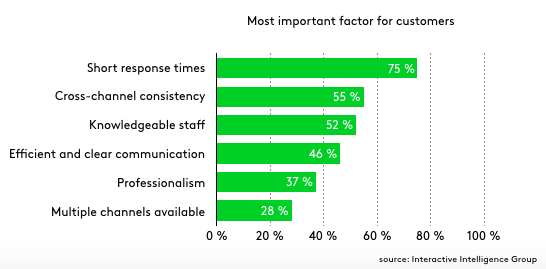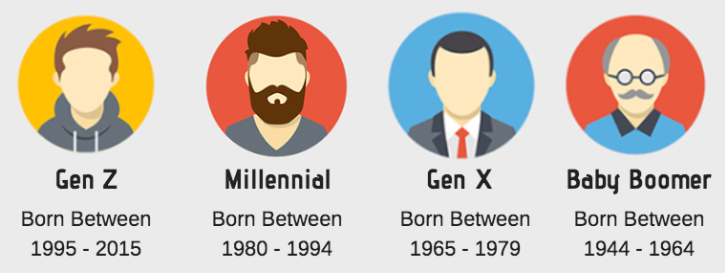
D’Arcy Guerin Gue, Co-founder of Phoenix
The widely anticipated expansion of digital healthcare over the next decade is very exciting for many healthcare executives, physicians, IT vendors, and consumers. Potentially transformational IT technologies are already being explored by many hospitals, including new devices and applications designed to streamline healthcare operations, lower costs and enhance the quality of care. Artificial intelligence (AI), machine learning, blockchain, telemedicine, voice search, virtual reality, wearables, robotics, chatbots, and mobile anything are among the most promising and popular health technologies.
With more systems come more technical support needs. The strategic importance of your IT service desk will grow, and will increasingly be held more accountable for ROI. One potential result could be that “IT support will become much more customer-facing, but also much more robotic,” says Doug Brown, Managing Partner of Black Book Research. “Robotic” support is probably not an ideal prospect for many users. How can healthcare IT departments keep their support services personal and relatable for users when, at the same time, ever more impersonal technologies take hold in the care environment?
An important larger context is that most hospital IT support users are already dissatisfied with their in-house services if they still have them. And, according to Black Book Research, among the majority of hospitals that have moved to third party outsourcing, 88 percent of clinicians have reported that they are significantly dissatisfied by their support experiences. For many, their pain is an insult added to existing injury: the oft-publicized physician “burn out” created by the unwelcome blitz of EHRs and other IT into patient care in recent years.
The best IT support managers have come to understand how essential the human interaction factor is within their service desk call centers. Many CIOs, COOs, and CEOs get it: it’s hard not to do so when your physicians complain about wasted time on service calls with slow, graceless or disengaged agents, especially if their issues aren’t solved adequately. In our experience, hospital IT users are most satisfied with their service desks when agents exhibit geniality (including personal recognition of the caller), concern, a sense of urgency, professionalism, deep knowledge, efficiency, and speedy resolution.
It must be emphasized, though, that the foremost expectation of customers across all industries is speedy resolution. On the other hand, as much as hospital executives want their user base to be happy with IT support, their greatest expectation is usually cost-efficiency. New automated service tools claim to address both concerns. Given the overall momentum of computer-based solutions in our industry, there is little doubt that automation will play an important role in the healthcare IT tech support function of the near future.

Yet…in Phoenix’ long experience outsourcing hospital service desks, most of our clients have resisted shifting any part of user support to automated solutions. Their antipathy includes flat-out NO’s to online self-service even for a problem as simple as systems password recovery. Our real-life physician users want support from real people who care.
Healthcare is changing more dramatically now than ever before, with new internal and external services, often enabled by revolutionary technologies. But historically, our industry has been less flexible and adaptive of change, especially technological change, than other industries; its first priority has been patient care that is traditionally provided by highly trained humans, only with the help of technology. This scenario is what most of our current physicians — either Gen Xers or Baby Boomers — signed up for, are used to and generally insist on.

Relatively soon, a majority of physicians will be Millennials. The oldest grew up with Nintendo digital games and had smartphones by the time they were 15. They have been bred on automation and its immediate gratification, and are unlikely to resist some forms of technical support that are AI-based or otherwise digitally provided. Some, yes…but not all. They are unlikely to give up human-centered, or at least human-managed support any time soon. In medicine, patient lives are always at stake.
As our service desk operations evolve, how can we balance the continuing need for human-based technical assistance against the availability of automated solutions that may offer greater speed and cost-effectiveness? Can our services evolve into an efficient network of omnichannel options– phone, email, live chat, SMS, bots and social media that meet both institutional and patient care objectives?
Let’s take the example of one digital option: chatbots. According to the Oxford dictionary, a chatbot is “a computer program designed to simulate conversation with human users, especially over the Internet.” Simple chatbots answer questions based on pre-written keywords that they understand. Smart chatbots rely on artificial intelligence to communicate with alternative suggestions to more complex questions.
In China, chatbots already make medical appointments. They do a lot more: call a taxi, send money to friends, check-in for a flight and more. Does one of your physicians need to reset an EHR password? No problem for a chatbot; this is a specific question with a specific answer. Chatbots are fast; chatbots save money. But chatbots are anything but personal.
The temptation to use automated support to cut time and costs comes at the risk of further alienating physicians and other clinicians through IT, rather than making their lives easier. Automation via tools like chatbots and self-service surely “roboticizes” interactions, resulting in a loss in human-to-human contact and a degrading of users’ relationships with the IT staff — and perhaps with the institution itself. Despite all the hype around AI and machine learning, perhaps these technologies will be best embraced by support teams as an extension of their personal services, designed first to enhance the customer experience and only secondarily to ease the support staff’s workload and/or cut costs.
If we are smart, we should be able to create a balance between digital and human interaction. Even IT-resistant physicians are learning to appreciate digital solutions if they clearly bring ease and convenience. The banking industry, years ahead of healthcare, offers examples: today we can activate a renewed credit card by going to a URL and using a simple 2-step button-pressing process, or calling a bot that activates the card just as quickly. Yesterday, we had to call, wait, and then talk to a representative, who had unnecessary questions and a sales pitch or two before pronouncing we’d graduated from the five-minute ordeal to — yes! — card activation.
Examples exist in the healthcare sector too. SafedrugBot © is a chatbot messaging service that offers on-the-go assistant-like support to health professionals enabling them to access correct information about drug dosages for pregnant and breastfeeding women. Using the bot is faster than looking up a drug online, reading through unneeded pages and hunting for the answer to the user’s single question.
The first principle of IT support should always be that users — customers — humans — want to be seen and heard, and to get rapid help. They want to feel valued. As we consider inserting any automated solutions into our support processes, the over-riding criteria should be whether a solution will make users’ lives easier from their perspective, not anyone else’s. We also must continue to make an alternate human connection easily available. With those provisos, we can extend the concept of treating humans like humans into automated offerings as far as the technology will allow.
Impatient to move faster? Just think — the youngest millennials are now 25. The oldest Gen Zs are 24. In what will seem like no time at all, we will have new generations of caregivers who may well clamor for lightning-fast digital support as much as they have for the latest and greatest computer games. In the meantime, vendors hopefully will have made quantum leaps in improving the scope and value of automated support.
About D’Arcy Guerin Gue
D’Arcy Guerin Gue is a co-founder of Phoenix, with over 25 years of experience in executive leadership, strategic planning, IT services, knowledge leadership, and industry relations — with a special focus on patient engagement and federal compliance issues. She currently serves as the VP of Industry Relations at Phoenix Health Systems, a division of Medsphere Systems.
